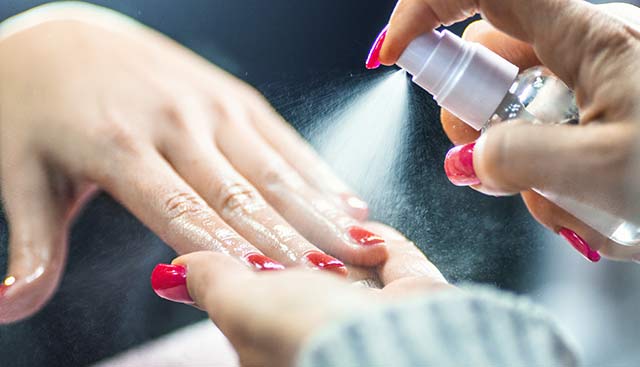
Cancer and Other Health Risks at Nail Salons
For some people, a visit to a nail salon is just an occasional treat —a fun way to relax and feel pampered. Others would never dream of leaving home without perfectly painted fingernails and toenails. Either way, a professional manicure or pedicure can help you look and feel good. However, a growing body of medical research indicates that there is a link between certain nail products and serious health consequences.
The main health risks at nail salons, which apply to both clients and employees, are associated with exposure to:
- Ultraviolet (UV) light – Gel manicures and pedicures involve the use of a light source to harden and cure a topcoat, which makes the polish dry fast, resist chipping and last much longer than conventional nail enamel. For this purpose, many salons use UV lamps that emit radiation, which are very similar to those used for indoor tanning (some nail salons use UV lamps to speed-dry regular nail polish as well). Exposure to UV radiation from these lamps can lead to photoaging, skin damage and cancer, especially on the tops of the hands, where the skin tends to be particularly thin and sensitive.
- Hazardous chemicals – Exposure to toxic solvents like toluene, which is found in many nail products, and acetone, which is often used for polish removal, can lead to a host of health issues, including skin irritations, headaches, breathing difficulties and allergic reactions. Additionally, because many nail products, such as gels, are designed to produce long-lasting results, they can be difficult to remove. Specifically, the nails (and fingers or toes) must be soaked in a strong acetone solution in order to completely take off the polish residue.
- Cancer-causing compounds – Several chemicals that are commonly found in nail products are known carcinogens. These include formaldehyde, which is often used as a nail-hardening agent and disinfectant for nail care tools, as well as butyl acetate, a solvent, and ethyl methacrylate, the main ingredient in acrylic nails. In addition to cancer, exposure to these chemicals can lead to central nervous system damage and reproductive harms.
As general awareness about these dangers continues to increase, some nail salons are moving toward using organic products. However, until safer options become widely available, the popularity of the products currently used for manicures and pedicures — and gels in particular — will likely continue. Consider that gels not only provide faster, better and more cost-effective results than traditional nail polish, but they also can be life-changing for some people who want to camouflage disfiguring nail conditions.
To help protect clients from the dangers of UV light exposure, some salons offer the use of fingerless gloves constructed of a special polymer that incorporates titanium dioxide, which is an effective sunscreen. Alternatively, clients can apply a sunscreen lotion to their hands prior to a gel manicure, and to their feet prior to a gel pedicure. A better option would be to opt for a regular manicure or pedicure and avoid the lamps altogether. Of course, the best and healthiest option of all would be to simply embrace the beauty of natural nails.
If you’d like to discuss your personal cancer risk profile with an oncologist at Moffitt Cancer Center, you can request an appointment by calling 1-888-663-3488 or completing a new patient registration form online. We do not require referrals.
